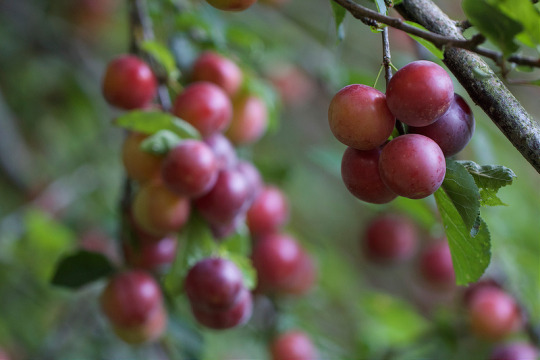
‘16
Falling Behind and Catching Up
It’s easy to fall behind. From last summer’s sweet-tart rush of cherry plums onward, the weeds were ascendant. Between the somnolent force of midsummer and entrenched undesirables, the rows were ceded to spraying seeds and stretching rhizomes. As the seasons turned, mutters of “I don’t even like gardening” were heard. Even the normally-steady crop of apples was a disappointment — insipid from the abnormally warm spring and summer, bitter and unappetizing from scores of insect pests.
I don’t mean to suggest that the swelter made everything terrible — the Frost Peaches produced a bountiful crop of chin-drippingly perfect fruit, and single Shiro plum we claimed from the tree was sublime. Diversification yielding its rewards!

A bowl of delicious frost peaches (July 2015).
Winter’s mild, wet days began to hint at spring, and we wondered about the perennials we’d planted and abandoned. Were any of them still alive beneath the quack grass, blackberries and thistles? Should we have another go at it this year? Curiosity got the better of us, and by February we were playing at garden archaeology and excavating our previous efforts.
The Portuguese tree kale was (and is) still growing strong with a sturdy, snaking trunk that sprawled across a good portion of the garden bed with new roots growing where it had made contact with the ground. At least four varieties of mint seemed not much worse for wear, and the lavender had suffered on through a vigorous invasion of quack grass. Later excavations found chard, chives, parsley and onions; lush layers of mache and chickweed had self-seeded and created a nice cover-crop to make reclaiming some portions of the garden easier.
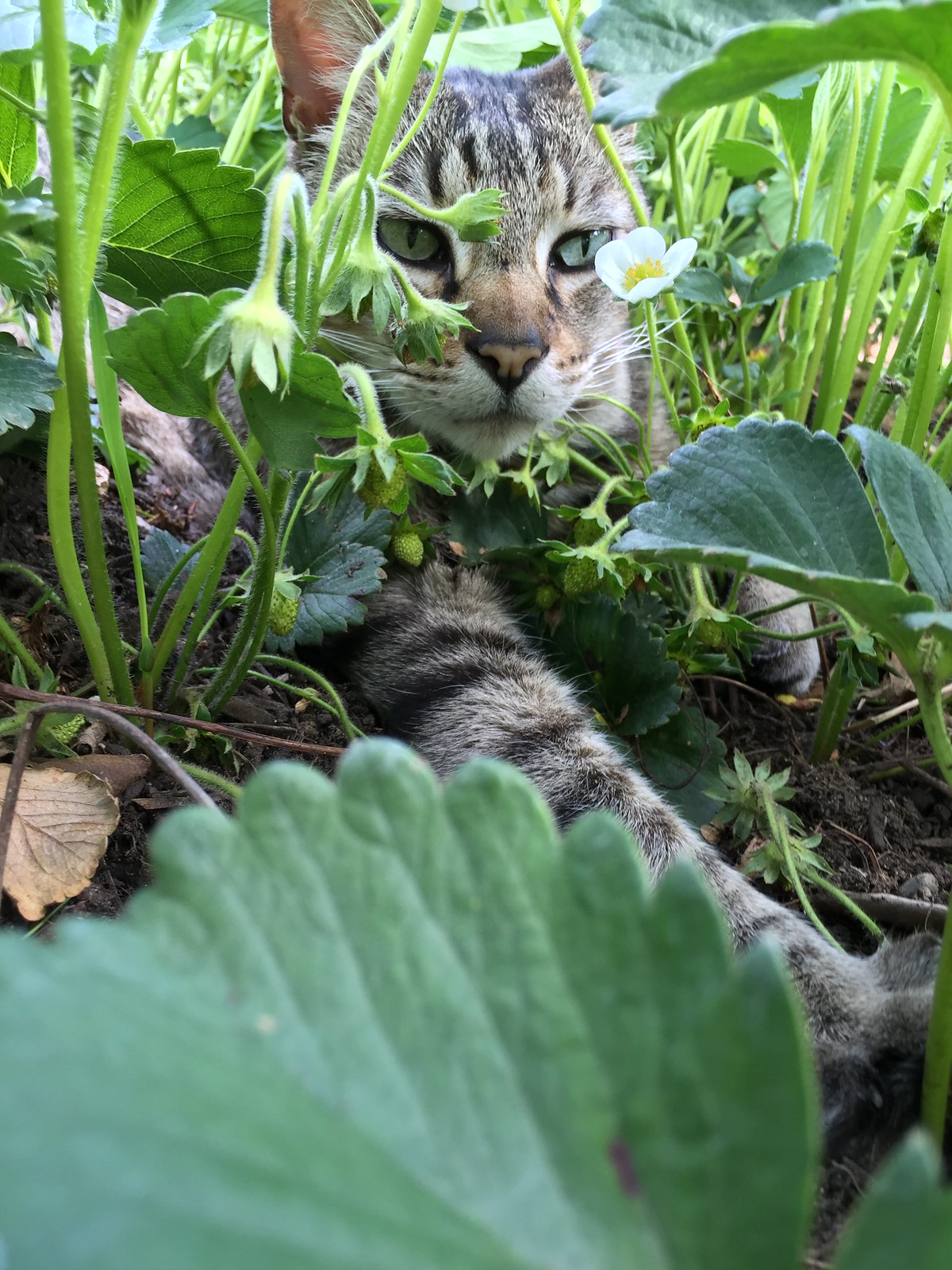
Our cat, Morel, helps us weed the Benton strawberries.
I was most impressed, however, by the strawberries. We’d planted three varieties — Seascape, Albion and Benton. Actually, only the Benton impressed. Seascape and Albion looked a bit stunted and disgruntled from their time in the wilderness, but the Benton plants were thick, verdant and nearly a foot tall. After a good weeding, all three varieties recovered, but the Benton plants bloomed profusely and are now set to produce a large crop of fruit starting in late May. I can’t wait!

Abundant Benton strawberries.
‘16
Falling Behind and Catching Up
It’s easy to fall behind. From last summer’s sweet-tart rush of cherry plums onward, the weeds were ascendant. Between the somnolent force of midsummer and entrenched undesirables, the rows were ceded to spraying seeds and stretching rhizomes. As the seasons turned, mutters of “I don’t even like gardening” were heard. Even the normally-steady crop of apples was a disappointment — insipid from the abnormally warm spring and summer, bitter and unappetizing from scores of insect pests.
I don’t mean to suggest that the swelter made everything terrible — the Frost Peaches produced a bountiful crop of chin-drippingly perfect fruit, and single Shiro plum we claimed from the tree was sublime. Diversification yielding its rewards!
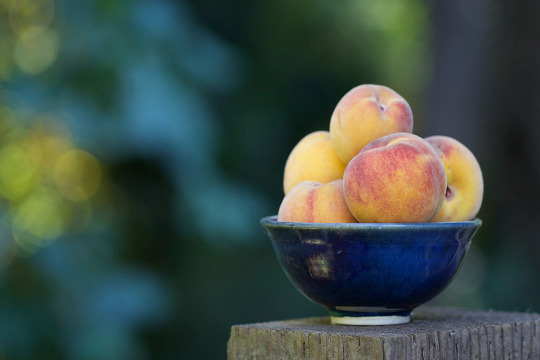
A bowl of delicious frost peaches (July 2015).
Winter’s mild, wet days began to hint at spring, and we wondered about the perennials we’d planted and abandoned. Were any of them still alive beneath the quack grass, blackberries and thistles? Should we have another go at it this year? Curiosity got the better of us, and by February we were playing at garden archaeology and excavating our previous efforts.
The Portuguese tree kale was (and is) still growing strong with a sturdy, snaking trunk that sprawled across a good portion of the garden bed with new roots growing where it had made contact with the ground. At least four varieties of mint seemed not much worse for wear, and the lavender had suffered on through a vigorous invasion of quack grass. Later excavations found chard, chives, parsley and onions; lush layers of mache and chickweed had self-seeded and created a nice cover-crop to make reclaiming some portions of the garden easier.
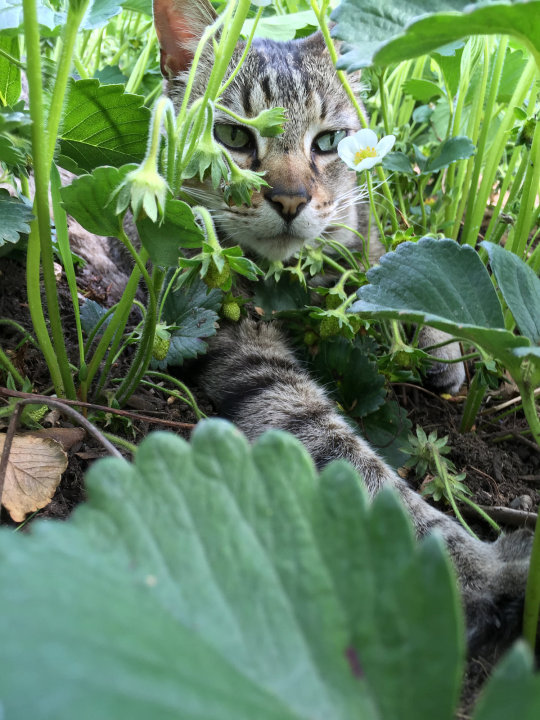
Our cat, Morel, helps us weed the Benton strawberries.
I was most impressed, however, by the strawberries. We’d planted three varieties — Seascape, Albion and Benton. Actually, only the Benton impressed. Seascape and Albion looked a bit stunted and disgruntled from their time in the wilderness, but the Benton plants were thick, verdant and nearly a foot tall. After a good weeding, all three varieties recovered, but the Benton plants bloomed profusely and are now set to produce a large crop of fruit starting in late May. I can’t wait!
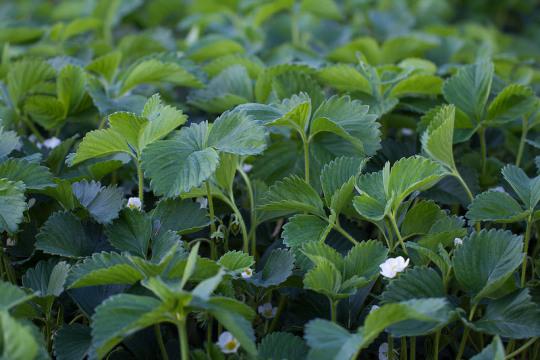
Abundant Benton strawberries.
‘15

‘15
